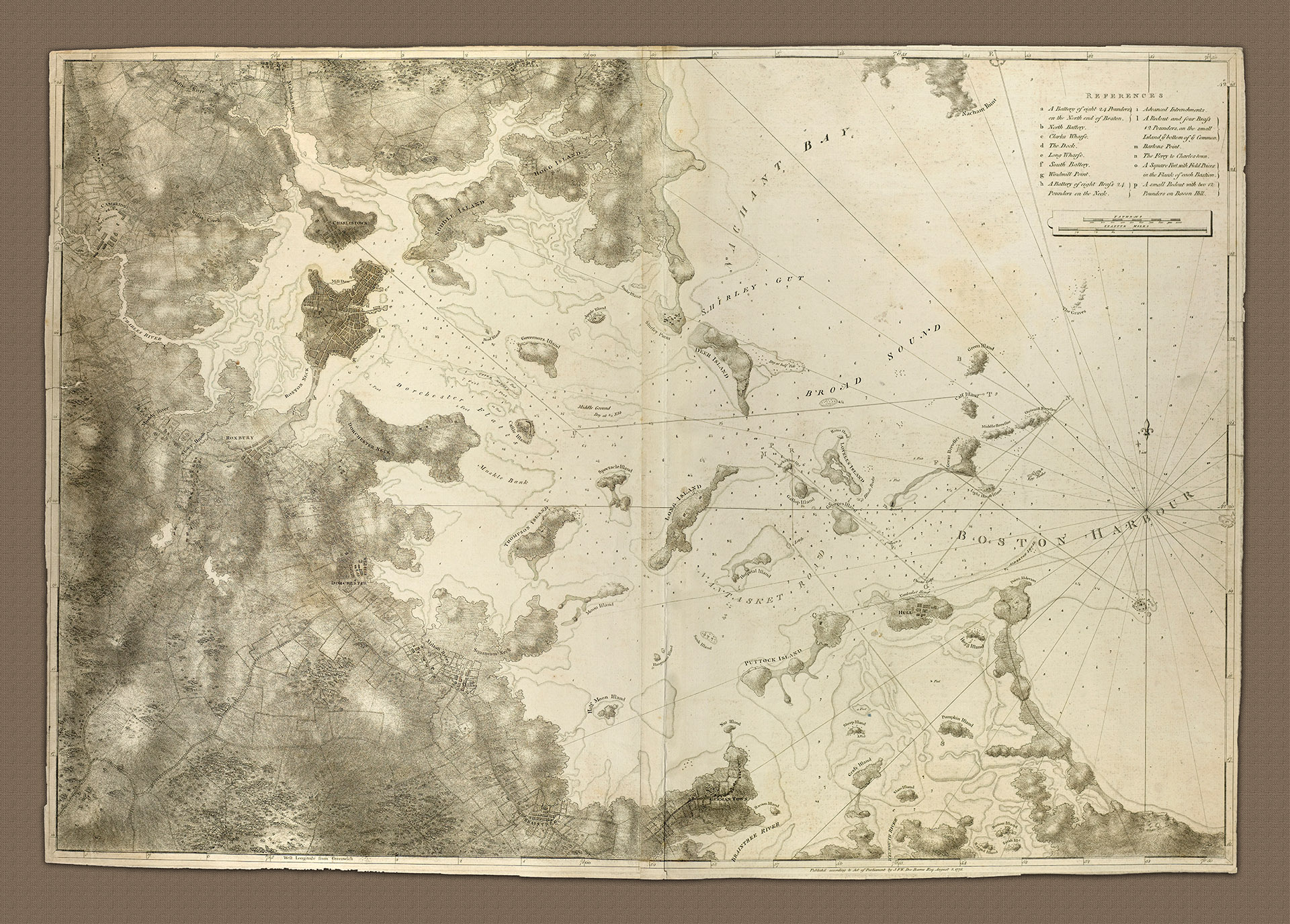The chart presented here is a two sheet edition which excludes the Nautical Remarks and Directions included on other editions (see Heritage Charts A102).
Credit for the land topography should likely go to surveys of Samuel Holland and his team of cartographers working in the area at the time (see Heritage Chart A104).
What makes this 'Chart' so significant is that, at the time, it was unusual for so much detail of land features to be included in a sea chart intended for navigational purposes and it is especially significant that this chart includes the disposition of military positions such as batteries, entrenchments, forts and a redoubt (a temporary or supplementary fortification). Such detail had never, up until this publication, been seen together. In later states of the chart, town names such as Dorchester, Cambridge and Roxbury are removed while additional fortifications were drawn-in.
The topography includes buildings, boundaries and roads. It should be noted that soundings are not marked for all parts of the harbor, such as the entrance to Charles River or north of Charlestown, or for other entrances and harbors within the bay such as those around Braintree and German Town.
The chart also depicts the Lighthouse on Brewster Island (built 1716 and the first lighthouse in the New World - later destroyed by the Rebels in 1775 and again by the British in March 1776). At the time of publication Boston was a leading center of commerce and government for the British and was at the centre of the political unrest leading up to the revolution.
In March 1770 political tension between the Crown and the Colonies had been raised as a result of the ' Boston massacre' in which 5 colonials were shot by British troops. With the imposition of the 'Tea Act' in May 1773 tensions grew further and finally over-spilt with the ' Boston Tea Party' in December of that year.In March 1774 the British Parliament had introduced the 'Coercive Acts' and closed the port, suspending local government in Massachusetts requiring locals to give quarters and supplies to occupying British troops.
By the autumn of 1775 Boston was the scene of one of the most gruelling and savage sieges of the War of Independence. With the eventual evacuation of the British force in March 1776 Boston was the scene of the first major victory for the newly formed Continental Army under George Washington.
Anyone comparing this chart with a modern day map or chart of Boston Harbor will see how land-fill has completely changed the face of the city: Boston 'neck', as depicted on this chart, is now one large suburb and Dorchester Neck, now incorporating Castle Island (Castle William), is practically joined to the main city. Noodle Island is now extended to incorporate Logan International airport and, to the West, the River Charles has shrunk to a bridge width over to Cambridge. What makes a chart such as this relevant to modern day Boston, beyond just the historical interest, is that it clearly and accurately depicts the multitude of waterways upon which the environs of the modern city are built.
This is a beautiful example of a first state of this hugely significant chart of the harbour of Boston. J.F.W. Des Barres himself acknowledges that it was composed from different surveys, but principally from that taken in 1769 by Mr George Callender, late Master of His Majesty's ship Romney (see Heritage Chart A107). The chart presented here is a two sheet edition which excludes the Nautical Remarks and Directions included on other editions (see Heritage Charts A102).


